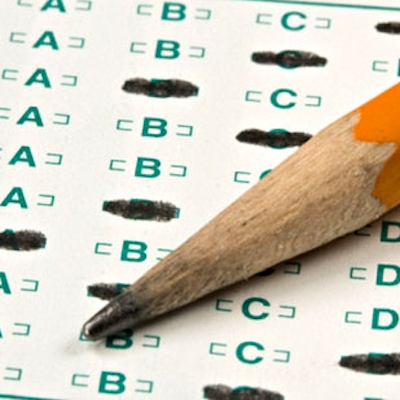It’s All About Education: How Breakfast Could Help Close the Achievement Gap
Wednesday, March 11, 2015
Last week, I wrote about school lunches. However, you may not realize that in addition to the National School Lunch Program, there is also a National School Breakfast Program. Since 1975, this meal program has provided federal funding to states, enabling more than 89,000 public and nonprofit institutions to serve breakfast to children in their care. As with the school lunch program, students whose families make up to 130% of the federal poverty level ($29,965 for a family of four in 2013) are eligible for free breakfasts; students whose families make between 130% and 185% of the federal poverty level (up to $42,643 for a family of four in 2013) are eligible for reduced-price breakfasts (no more than 30¢); and all other students must pay full price for their breakfasts. The schools are free to set their own prices for those who pay full price, although they must still operate their meal service as a nonprofit program.
For years, we’ve heard the adage, “Breakfast is the most important meal of the day!” And while many working adults satisfy themselves with a morning coffee, research has shown that breakfast is extremely important for young children. Numerous studies have shown that students who eat breakfast regularly show increased ability to pay attention throughout the morning and are less likely to be overweight or obese, even if they are simply eating breakfast cereals. A study conducted by the University of Pennsylvania School of Nursing in 2013 found that six year olds who ate breakfast every morning had significantly higher IQ scores than those who did not. Researchers believe that breakfast plays a crucial role not only in refueling the body, but also in providing valuable social interactions that stimulate the brain. “Because adequate nutrition in early childhood has been linked to increased IQ through childhood, which is related to decreased childhood behavioral disorders, better career satisfaction, and socioeconomic success in adults, breakfast consumption could ultimately benefit long-term physical and mental health outcomes as well a quality of life,” said Dr. Jianghong-Liu, PhD, RN, FAAN, associate professor and one of the authors of the study.
Unfortunately, while we know the benefits of breakfast and we have a school breakfast program, it turns out that more than ten million students nationwide who qualify for free or reduced breakfasts are not being served. According to a report published by the Food Research and Action Center (FRAC) in February 2015, only 53% of children who qualify for free or reduced lunches are receiving breakfast. While nine out of ten schools that offer a lunch program also offer a breakfast program, the researchers say that there are several barriers to breakfast participation for low-income children: one is the difficulty of arriving at school early, which is particularly a problem for children with long commutes to school (either on the bus or with parents); the other is the social stigma associated with it, since those children who participate in the school breakfast program often see it as a public declaration that their family is poor. The study found that schools that offer “grab & go” meals to be consumed in the classroom and schools that served breakfast to all students in their classrooms had a higher level of participation than those who served breakfast in their cafeterias prior to the start of the regular school day.
GET THE LATEST BREAKING NEWS HERE -- SIGN UP FOR GOLOCAL FREE DAILY EBLASTWhen I taught in Maryland in the late 1990s, the school where I worked had a high percentage of low-income students, well over half of our student body. As one of the neediest schools in the district, we were designated as a “Schoolwide Title I” school, enabling us to serve free breakfast to all of our students in their classrooms, regardless of their family incomes. Teachers were encouraged to sit with the students and eat breakfast themselves, modeling both good eating habits and appropriate behavior. The benefits of this program were tremendous:
It provided an informal social time to do “temperature-taking” for the teacher, to gauge students’ moods and observe social interactions between students.
Student tardiness dropped dramatically, since most students wanted to be at school for breakfast.
There were no longer any students complaining that they were hungry; before we started this program, I often sent two students per day to the nurse’s office for graham crackers.
There was a marked increase in students’ ability to stay on task throughout the morning.
According to the FRAC study, American schools can offer free breakfasts to all children in three ways: using Provision 2, a long-standing federal option which provides significant administrative savings; the Community Eligibility Provision, a new federal option that allows high-poverty schools to offer free breakfast and lunch and eliminate school meal applications; or through Nonpricing, in which they do not collect fees from students but still count and claim federal reimbursement for meals served to each child by fee category.
By law, all public schools in Rhode Island offer breakfast to students. However, based on the information provided on their website, the Rhode Island Department of Education provides only about 29,000 children with free or reduced breakfasts, compared with the 72,000 who receive free or reduced lunches. That means that only 40% of the children who are eligible for free or reduced meals are taking advantage of the school breakfast program, far below the national average of 53%. We know that eating breakfast can have a positive impact on students’ achievement. Making breakfast a daily reality for all of the children in Rhode Island is one more step we can take towards helping to close the achievement gap between low-income students and their wealthier peers.
Lauri Lee is an independent consultant with over twenty years of experience in both public and private education, with learners from infants through adults. With experience in teaching, marketing, communications, social media, development, admissions, and technology, she is able to synthesize many of the issues facing our educational system today. She lives in Providence, RI with her family, a big dog, and a small cat. She blogs at http://www.AllAboutEducation.net and you can follow her on Twitter at @fridovichlee.
Related Slideshow: 10 RI State Education Rankings
Related Articles
- It’s All About Education: Playing in the Woods Can Help Kids Reach Their Full Potential
- It’s All About Education: Making the Dream a Reality
- It’s All About Education: What if College Isn’t Necessary
- It’s All About Education: Why Common Core Won’t Help Our Children
- It’s All About Education: Will Charter Schools Fix Our Public School System?
- It’s All About Education: Student Engagement Leads to Success
- It’s All About Education: Chronic Absenteeism’s Effect on Learning
- It’s All About Education: Do You Trust Your Child’s Teacher?
- It’s All About Education: It’s About Time
- It’s All About Education: The Connection Between Housing and Achievement
- It’s All About Education: Is it Time for a Slow Education Movement?
- It’s All About Education: What is an “Excellent” Teacher, Anyway?
- It’s All About Education: Can Universal Preschool Close the Achievement Gap?
- It’s All About Education: A Recipe for Disaster - Common Core Standards for Kindergarten
- It’s All About Education: Free College Tuition - Why Just Community College?
- It’s All About Education: Inequities in the College Admissions Process
- It’s All About Education: Is the American Dream a Pipe Dream?
- It’s All About Education: How Vaccination Affects Schools – and Society
- It’s All About Education: Schools that Harness the Power of Nature
- It’s All About Education: Social Promotion is Not the Problem
- It’s All About Education: How Can We Ensure that Kids Have Great Teachers?
- It’s All About Education: The High Cost of Higher Education
- It’s All About Education: The Rise in Kindergarten Readiness Testing
- It’s All About Education: Some of Education’s Best Ideas from 2014
- It’s All About Education: Changing Lives with School Lunches























